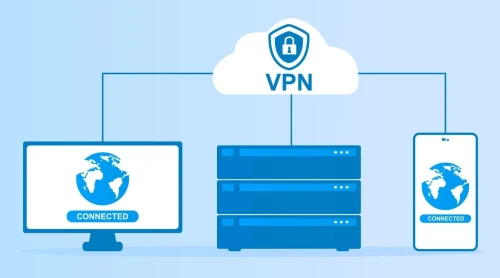How to Secure Your Data Warehouse in a Linux System

The world of enterprise solutions relies heavily on effective data management. Standard systems, which work great for small businesses, simply break down once you have thousands of moving components operating worldwide - if not hundreds of thousands. Maintaining unstructured data, primarily if your business operates on a global scale, isn’t just a waste of resources; it’s also a risk to your company.
Understanding how to properly organize and secure your information in a data warehouse within a Linux system can help you prevent cyberattacks from inside and outside your company while keeping your data safe.
So, where do you get started? Let's begin by examining what a data warehouse is and what may put yours at risk. I’ll then share practical measures for improving data warehouse security.
What is a Data Warehouse?
 Data warehouses are one of the prime options for large enterprises to sort, secure, and silo their data so that it can quickly be processed, analyzed, and used for more in-depth insights and recommendations. This is because a data warehouse works beyond simply structuring your most recent data; it provides a framework that allows you to store historical versions of documents alongside their modern counterparts.
Data warehouses are one of the prime options for large enterprises to sort, secure, and silo their data so that it can quickly be processed, analyzed, and used for more in-depth insights and recommendations. This is because a data warehouse works beyond simply structuring your most recent data; it provides a framework that allows you to store historical versions of documents alongside their modern counterparts.
They work by regularly transferring data from operational system databases like ERPs or CRMs, apps, social media, the Internet of Things, and more. This produces a histography of the data you need for your business, allowing you to tackle current issues and better map trends as they adapt over the years.
Why Does Your Large-Scale System Need a Data Warehouse?
There are several reasons why building a data warehouse to structure and store your data should be the number one step when it comes to securing your data on Linux, especially when it comes to cloud-based warehouses:
- Historical documents are automatically sorted.
- Data is automatically duplicated and backed up on multiple servers.
- Centralized data is easier to keep track of and secure.
- Access controls are a breeze to implement.
What’s Putting Your Data Warehouse at Risk?
 Linux systems are known for their security and scalability. Thanks to the open-source nature of the system itself, which is constantly being updated and provides more user access control for businesses, you are right on track for securing your large datasets (and their historical versions).
Linux systems are known for their security and scalability. Thanks to the open-source nature of the system itself, which is constantly being updated and provides more user access control for businesses, you are right on track for securing your large datasets (and their historical versions).
Before we get into what steps you can take to prevent data breaches in a Linux system further, let’s recap just what type of threats you’re defending against:
-
Data Breaches: Unauthorized access to confidential data often leads to the exposure or theft of sensitive data, such as financial or personal information. Financial loss, reputational damage, and legal consequences are all possible outcomes.
-
Ransomware: Ransomware is malicious software that encrypts a victim's files and demands payment for the key to decrypt them. Data loss, disruption of operations, and financial extortion are all possible consequences.
-
SQL Injection: SQL injection is a code injection technique that exploits vulnerabilities within a web application’s database layer through malicious SQL queries. Its impacts include unauthorized data access and manipulation and potential database corruption.
-
Insider threats: Insider threats are security risks that originate within an organization. They usually involve employees or contractors misusing their access to systems and data. Data breaches, intellectual theft, and operational sabotage could be severe consequences of insider threats.
-
DDoS attacks: Distributed denial-of-service attacks overwhelm a system, network, or service with internet traffic and make it unusable for users. Service downtime, user distrust, and financial losses are all possible consequences.
Implement these Key Methods to Boost Data Warehouse Security
You will next need to take proactive steps towards securing your data warehouse. This will further minimize the risk of cyberattacks or insider attacks from harming your business.
Implement Robust Access Controls
The first step will always be to implement robust access controls. Think of these controls as keys to a building. Users should only be able to access the rooms available and no one else’s. This prevents large-scale data breaches and potential insider attacks from interfering with your operations.
To do this, you will need to define:
- Users and Roles: Everyone who has access to your data warehouse must have a unique user identification, and each user must have a defined role (level of access).
- Permissions: You need to define and set more than just the level of access. You also need to set each user’s permissions, which refer to what they can do with the data they can access. Examples of permissions include read-only, access, or edit.
Create Access Controls
You can create these access controls using Role-Based Access Control, which works wonders for businesses employing hundreds or thousands of people. In this approach, each role is clearly defined beforehand, and the level of access is locked.
You can also use services like OpenLDAP, which allows you to manage user accounts centrally, group those accounts, and create access control policies for your data warehouse. This approach works to simplify your administration efforts and provides consistent access levels across your entire network.
Encrypt Data in Transit and at Rest
 Data is at risk in transit (during a download or upload) and at rest (in your data warehouse). The best way to secure data in both situations is to encrypt it. This way, if someone intercepts the data at any stage, they will need a decryption key to make sense of the information. The open-source tools you will want to look at to accomplish this encryption include:
Data is at risk in transit (during a download or upload) and at rest (in your data warehouse). The best way to secure data in both situations is to encrypt it. This way, if someone intercepts the data at any stage, they will need a decryption key to make sense of the information. The open-source tools you will want to look at to accomplish this encryption include:
- LUKS: Linux Unified Key Setup (LUKS) provides full disk encryption if you store data on-site.
- SSL/TLS Protocols: This protocol encrypts data as it is transferred over a network, essential when managing a cloud-based warehouse.
- PostgreSQL: If you are looking for a built-in encryption solution, PostgreSQL encrypts your entire database or specific columns containing sensitive data.
Implement Top-Notch Network Security
Several security solutions must be standard to protect your Linux system and data warehouse.
Firewalls
Firewalls are the security guards that protect your entire network. They work to filter incoming traffic to block out suspicious users and connections before they even have a chance to peek at your data. Thankfully, Linux has top-notch firewall options available, but you are likely to use the below:
- iptables: this is the built-in firewall option for Linux. While powerful, you will need a technical expert to configure your settings based on your needs fully.
- ufw (Uncomplicated Firewall): This is just a user-friendly frontend for iptables, so if you need a simplified solution to implement Linux’s iptables firewall system, use this option.
Establishing rules beforehand is good practice when setting up your firewall. This can mean only allowing traffic from certain IP addresses or endpoints while blocking everything else. You can also filter services, allowing access only to essential services like database ports through your firewall.
VPNs
Virtual Private Networks (VPNs) are essential for Linux administrators to secure remote access to data stores. VPNs create encrypted tunnels that ensure data is transmitted securely between users and data warehouses. Selecting a VPN that uses robust encryption algorithms like AES-256 and supports multi-factor authentication (MFA) is essential. These measures enhance security significantly by preventing eavesdropping and making it unlikely that unauthorized access will occur even if login credentials have been compromised.
are essential for Linux administrators to secure remote access to data stores. VPNs create encrypted tunnels that ensure data is transmitted securely between users and data warehouses. Selecting a VPN that uses robust encryption algorithms like AES-256 and supports multi-factor authentication (MFA) is essential. These measures enhance security significantly by preventing eavesdropping and making it unlikely that unauthorized access will occur even if login credentials have been compromised.
Administrators should also focus on network segmentation and monitoring. They should log VPN connections to detect any unusual activity. It is important to keep VPN software up-to-date with the latest security updates to minimize vulnerabilities. Linux administrators can secure sensitive data and comply with regulatory requirements by implementing a robust VPN. They can also ensure business continuity via secure remote access. A well-managed VPN is essential to maintaining data warehouse security and integrity.
Intrusion Detection Systems (IDS)
Intrusion Detection Systems (IDSs) are essential in providing data warehouse security by constantly monitoring network traffic and system activities for signs of malicious behavior, such as port scans, malware communications, or hacking attempts in real-time and alerting administrators immediately with immediate alerts that enable swift responses. IDS is available both Network-based (NIDS) for network traffic monitoring and Host-based (HIDS) for individual devices. Administrators should regularly update signatures to recognize emerging threats and fine-tune rules to limit false positive alerts so alerts remain meaningful and actionable, ensuring data warehouse security is maintained.
IDS also helps meet regulatory compliance by providing logs and reports on security incidents. They're indispensable tools for proactive threat detection, incident response management, risk analysis, risk mitigation, and improved data warehouse operations security and integrity.
Conduct Regular Penetration Tests and Security Audits
Penetration testing (pentesting) is an essential security practice that simulates cyberattacks to identify and exploit vulnerabilities within data warehouse environments, with the objective being to uncover security gaps before malicious actors exploit them. Effective pentesting requires an in-depth knowledge of internal and external attack vectors, such as network security issues, application vulnerabilities, and configuration weaknesses. This involves both automated tools and manual techniques mimicking potential attack scenarios to assess your security posture.
is an essential security practice that simulates cyberattacks to identify and exploit vulnerabilities within data warehouse environments, with the objective being to uncover security gaps before malicious actors exploit them. Effective pentesting requires an in-depth knowledge of internal and external attack vectors, such as network security issues, application vulnerabilities, and configuration weaknesses. This involves both automated tools and manual techniques mimicking potential attack scenarios to assess your security posture.
Pentesting is essential to increasing data warehouse security as it gives administrators actionable insights into vulnerabilities and their potential impact. By addressing these vulnerabilities, they can implement targeted security measures to strengthen the warehouse further. In addition, regular pentesting helps administrators ensure compliance with regulatory standards and industry best practices, taking a proactive approach to risk management while increasing security awareness among IT teams and helping protect data integrity and confidentiality for long-term storage within warehouses.
Use These Security Frameworks and Standards
There are several famous Linux-friendly security frameworks and standards in which to invest. By building such a structured approach, you cover all your bases, ensure your business is protected with industry best practices, and reduce the risk of a cyberattack.
Just a few of the frameworks and standards you should have in your Linux system to protect your data include:
- ISO/IEC 27001: This international standard outlines the best practices for security management. To properly secure your data, follow this framework’s instructions.
- NIST Cybersecurity Framework (CSF): This framework provides a high-level structure for identifying, protecting, detecting, and recovering from cyber-attacks.
- CIS Benchmarks: This set of configuration recommendations for Linux helps ensure your data warehouse is secure.
Consider These Open-Source Security Tools
One of the prime reasons to invest in a Linux system is the sheer number of open-source tools that allow you to customize every element of your setup. When it comes to securing your data specifically, however, you’ll want to look at these options:
- Security Information and Event Management (SIEM): This tool centralizes log data across all security measures, from firewalls to servers. It’s used to identify security events and suspicious activity in real-time.
- Endpoint Detection and Response (EDR): Endpoints, or devices, are a significant security threat. EDR works on securing those endpoints and monitoring suspicious activity to minimize threats.
- Network Security Monitoring (NSM): This tool analyzes network traffic to identify suspicious activity and potential threats.
Our Final Thoughts on Improving Data Warehouse Security
Unstructured data is a big red target on your back. Compiling all that information into a data warehouse allows you to use your data more intelligently while also making it easier to protect yourself with the array of Linux security and open-source solutions available. Implement the best practices discussed in this article and rest easy knowing your critical data is secure from tampering, theft, and compromise.















